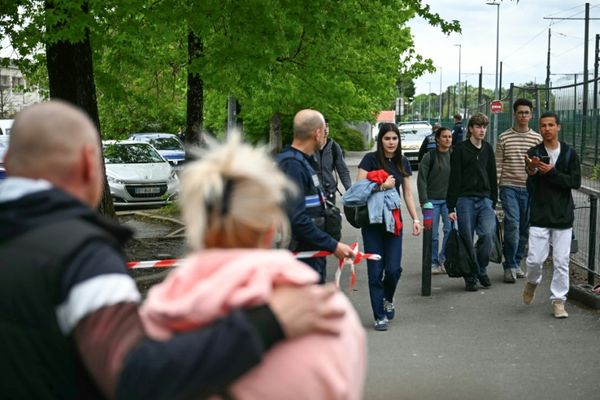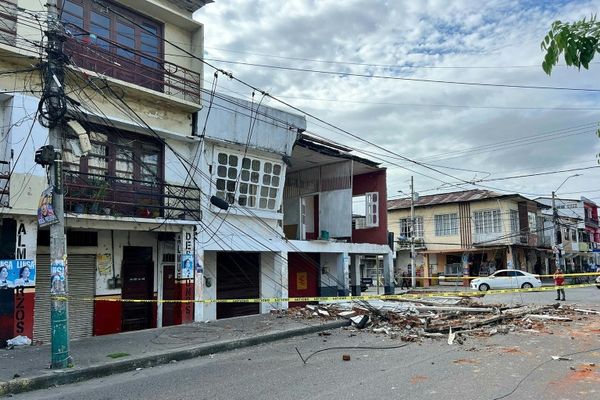
When the Andrews government released the business case for the Suburban Rail Loop (SRL) in 2021, in the middle of yet another Covid-19 lockdown, much of the coverage focused on the cost – $34.5bn for the first stage alone.
But contained within the 400-page document was also a new vision for the city of Melbourne.
“SRL is much more than a transport project,” it read.
“It will transform Melbourne into a ‘city of centres’ – supporting vibrant precincts outside the central business district that will provide more high quality jobs, greater housing options, and green and open space in attractive, well-connected neighbourhoods.”
After the release of draft vision papers earlier this month, it’s becoming clearer how the project will reshape the first six areas along the SRL East line: Cheltenham, Clayton, Monash, Glen Waverley, Burwood and Box Hill.
Here’s what we know so far.

Area populations set to grow
The 2021 business case flagged “changes to planning and land use controls” within a 1.6km radius of each station along SRL East, and the later North stage, which would in turn deliver 47,500 new homes.

Cheltenham’s population was forecast to double from 20,500 in 2018 to 52,500 in 2056, which would make it on par with the inner-city suburbs of Cremorne and Hawksburn.
Clayton, Monash, Glen Waverley and Burwood would also grow to match Collingwood, East Melbourne, Balaclava and Carlton North, respectively, while Box Hill would almost triple to 77,000 – the size of bustling South Yarra.
The draft vision papers, released for community consultation this month, show just how that might happen. According to the papers, development will be spread across the precincts in three categories – significant change, higher change and medium change.
While not explicitly mentioning building heights, illustrations and accompanying text describe “significant change” as “tall mixed-use developments” of up to 20 storeys; higher change as “higher density apartments, townhouses and semi-detached homes” up to eight storeys; and medium change as a mix of “lower scale detached and semi-detached housing”, such as double or triple-storey apartments, townhouses standalone homes.
Each map had an element of “significant change” close to the proposed new stations, and this expanded out in more developed areas such as Box Hill.

The opposition planning spokesperson, James Newbury, said the plan showed the government was attempting to “pack people into five suburbs” in “giant high-rise towers”.
“Under the cover of Christmas, Jacinta Allan is about to swing the wrecking ball through Melbourne suburbs,” he said on Wednesday.
‘Nothing particularly new’ about hubs
Jago Dodson, the director of RMIT’s centre for urban research, said he doubted the suburbs would transform into the image of a modern Asian city in the short term, as predicted in media reports.

“I don’t think we are going to see Hong Kong sprouting up within the next decade around the suburban railway stations,” he said.
“That sort of imagery of very tall towers – I think that’s probably unlikely.
“Unless we see incredibly, highly accelerating population growth, I just don’t think scale will be there to generate that level of intensity around all of those sites.”
Dodson said there was “nothing particularly new” about the concept of creating hubs in the suburbs, which was first floated in the Victorian government’s district centre plan of the early 1980s.
That plan said designated areas were to be given priority development treatment and included Box Hill, Cheltenham and Glen Waverley as well as the suburbs of Dandenong, Frankston, Oakleigh, Preston, Ringwood and Sunshine, among others.
“The intent was to create district centres in suburban areas and to concentrate employment and to some extent housing, but also retail and other commercial activity around them,” Dodson said.
“That approach has been pursued fairly weakly in the last 40 or so years, but it has remained a persistent component of metropolitan planning since then.”
He said Melbourne 2030, released in 2002, also included references to transit centres and the 2017 Plan Melbourne stressed the need to reduce urban expansion and create 20-minute neighbourhoods.

But he said there were several key elements that made the precincts along the Suburban Rail Loop stand apart from previous plans.
“In the past, these plans … were really just dots on maps, with no more substantive commitment than an exhortation to local government to follow them,” Dodson said.
“What is different about SRL is it’s building new public transport infrastructure and pairing that with the land development component as well. It has a dedicated authority that is going to actively plan around those stations that will make it likely more successful.”
But it could be done quicker
The draft vision has generated hundreds of responses so far and the Suburban Rail Loop Authority said the feedback would inform the development of structure plans.
The structure plans are set to be released in 2025.
A spokesperson for the Suburban Rail Loop Authority said it had been speaking with the community for “several years” and would continue to “as part of a broad program of engagement throughout the structure planning process”.
“With ongoing feedback from the community and thoughtful planning, these communities will maintain their existing neighbourhood character while we help increase housing choices where people want to live,” it said.

Jonathan O’Brien from Yimby Melbourne predicted this could be a “very long, drawn-out process” that could result in a years-long wait before up-zoning was approved.
“The plan released earlier this month feels purposefully vague when they know where the boundaries are and they could just tick the box,” he said.
“It’s frustrating to watch because the New South Wales government came in [after being elected] and within months approved Parisian density around all their stations. There’s literally no reason why Victoria couldn’t do the same.”
O’Brien said part of the reason the Yes In My Back Yard movement was launched earlier this year was due to a frustration with both state and local government’s “obsession with process”.
“It almost always leads to worse outcomes than an obsession with outcomes,” he said.
Yimby Melbourne released a report in October that proposed changes to Victoria’s planning to allow “Parisian development” of up to six-stories within one kilometre of train stations and 500m of tram stops.
It found the change could deliver more than 5m new dwellings in the city’s “missing middle”.
“The reality is that the government can just do it,” O’Brien said. “It would cost a lot less than hiring an army of planners to draft the precinct process.”







